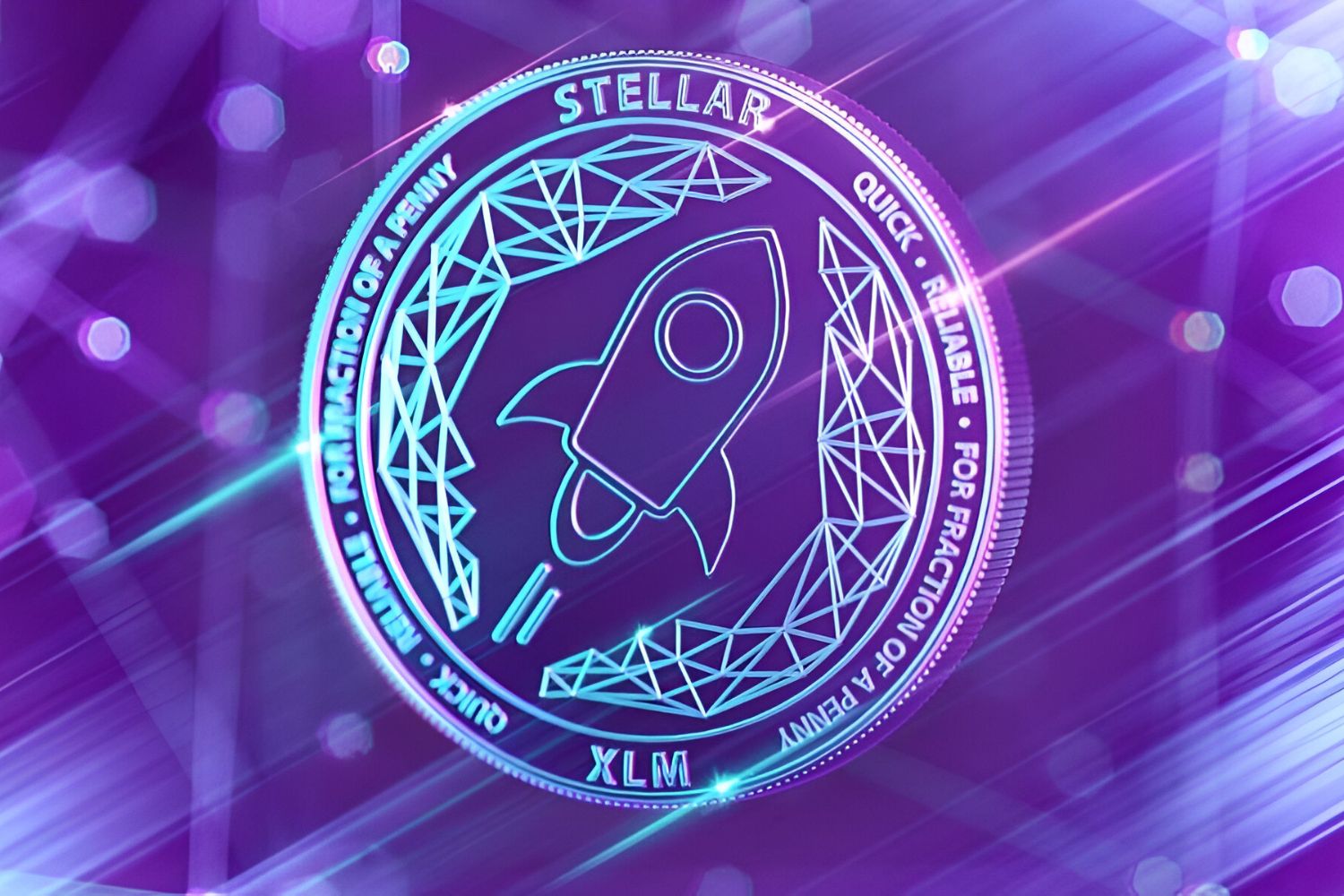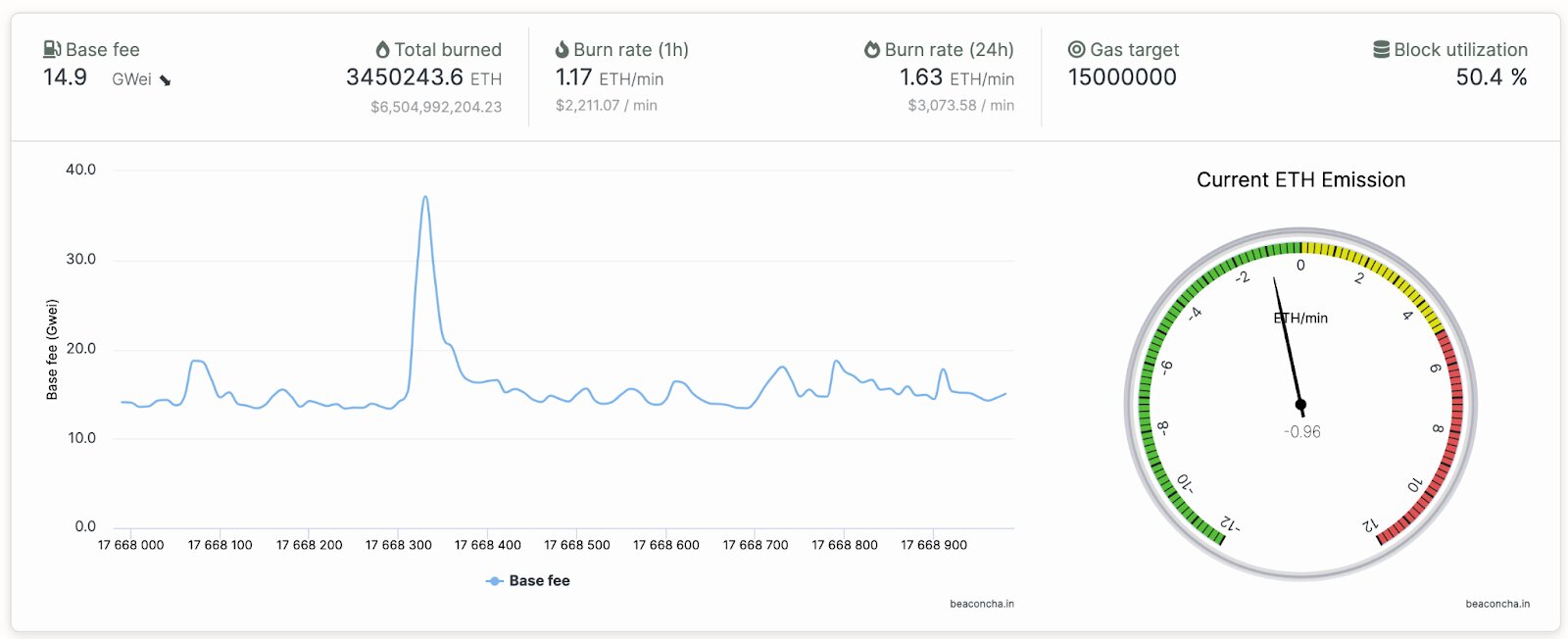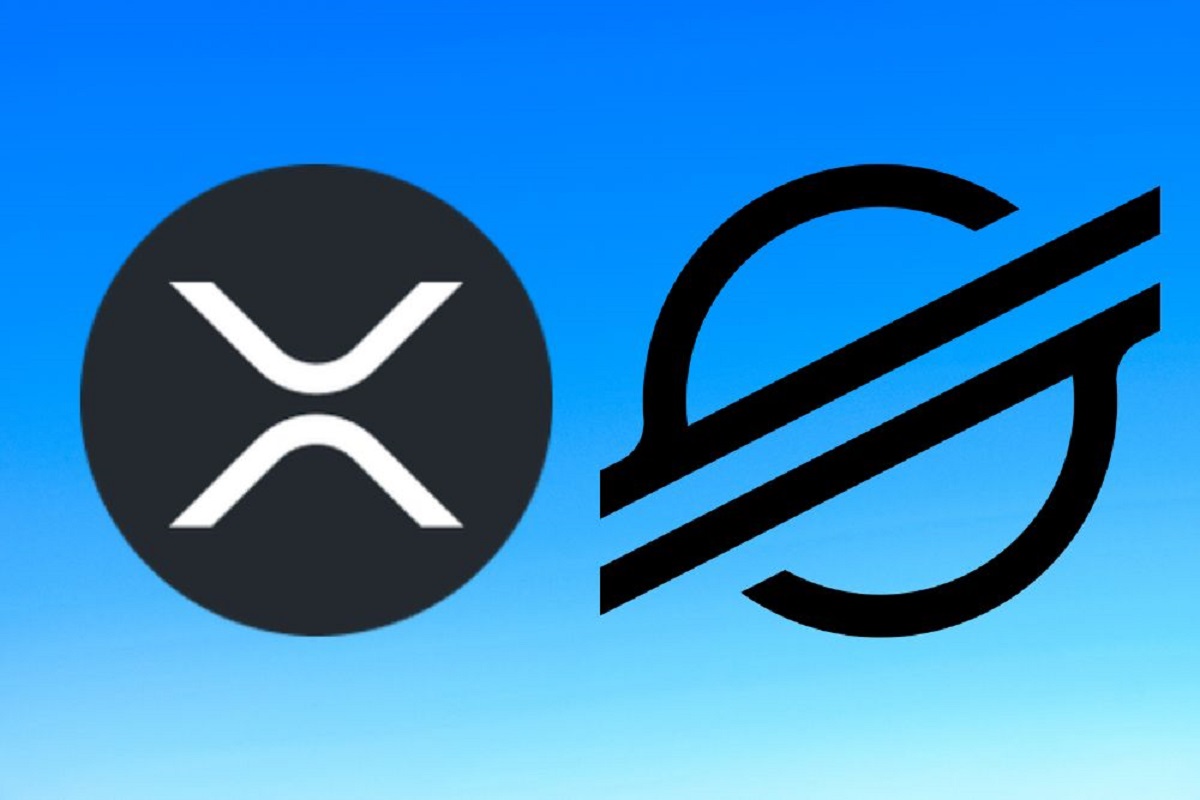Introduction
Welcome to the fascinating world of Stellar, a revolutionary cryptocurrency and decentralized payment network that is changing the way we think about financial transactions. In this article, we will explore the history of Stellar, how it works, its unique features, and its benefits compared to other cryptocurrencies. Whether you are an investor, a tech enthusiast, or simply curious about the world of digital finance, you are in for an exciting journey as we delve into the depths of Stellar.
Created in 2014 by Jed McCaleb and Joyce Kim, Stellar was designed to address some of the limitations and inefficiencies of traditional financial systems. While Bitcoin and other digital currencies paved the way for decentralized finance, Stellar takes it a step further by enabling fast, low-cost transactions and seamless cross-border transfers.
Stellar operates on a blockchain-based ledger, much like Bitcoin and other cryptocurrencies. However, what sets Stellar apart is its emphasis on facilitating transactions between different currencies, making it an ideal platform for conducting global business and bolstering financial inclusivity.
The core idea behind Stellar is to create an open network that connects financial institutions, payment systems, and individuals, allowing them to transact directly with one another. This eliminates the need for intermediaries, such as banks, and reduces costs while increasing efficiency and accessibility. Stellar’s vision is to enable anyone, anywhere, to send and receive money securely and affordably, making it particularly valuable for underserved populations and developing economies.
Stellar operates on a decentralized network of nodes that validate and record transactions through a consensus mechanism known as the Stellar Consensus Protocol (SCP). This protocol ensures the security and integrity of the network, making it resistant to censorship and manipulation. Moreover, Stellar’s consensus algorithm allows for speedy transactions, with settlement times often taking just a few seconds.
One of the standout features of Stellar is its native digital asset, Stellar Lumens (XLM). Unlike many other cryptocurrencies that primarily serve as a speculative investment, XLM has practical utility within the Stellar network. It serves as a bridge currency, facilitating the seamless exchange of various fiat currencies and cryptocurrencies on the platform.
In the next sections, we will explore the inner workings of Stellar in greater detail, including its consensus protocol, benefits, use cases, and how individuals can get started with using this exciting cryptocurrency. So, fasten your seatbelts and get ready for a journey into the world of Stellar!
History of Stellar
The history of Stellar dates back to 2014 when Jed McCaleb, the founder of Mt. Gox (a well-known Bitcoin exchange), joined forces with Joyce Kim to create a cryptocurrency that could revolutionize the financial industry. Initially, they intended to develop a digital currency called Ripple, but they soon realized the need for a more scalable and decentralized solution.
In July 2014, Stellar was officially launched as an open-source project, aiming to provide a platform for fast, low-cost financial transactions across borders. The project received a massive boost from Stripe, a prominent online payment company, which initially provided $3 million in seed funding. This helped Stellar gain momentum and attract the attention of various investors and partners.
Stellar became a standalone organization in early 2015, separating from Ripple and establishing itself as a non-profit entity called the Stellar Development Foundation (SDF). The SDF’s mission was to promote global financial inclusion by facilitating the efficient transfer of value through the Stellar network.
Throughout its journey, Stellar has witnessed significant milestones. In 2016, Stellar partnered with IBM, one of the world’s leading technology companies, to explore ways to use blockchain technology for cross-border payments. This partnership was seen as a major validation of Stellar’s capabilities and opened up new avenues for adoption and integration with traditional financial systems.
In 2018, Stellar announced the integration of the Lightning Network, a protocol that enables faster and cheaper transactions on the Stellar blockchain. This integration enhanced Stellar’s scalability and positioned it as a formidable player in the cryptocurrency ecosystem.
In recent years, Stellar has continued to make strides towards its goal of revolutionizing cross-border payments. It has partnered with various financial institutions, including banks and money transfer operators, to facilitate instant, low-cost transactions between different currencies. These partnerships have expanded Stellar’s reach and showcased its potential for transforming the way funds are moved around the globe.
Today, Stellar is considered one of the leading cryptocurrencies, renowned for its speed, scalability, and focus on inclusivity. Its dedicated team, led by CEO Denelle Dixon, continues to drive innovation and collaborate with industry leaders to make Stellar the go-to platform for global financial transactions.
As we move forward, let’s explore the inner workings of Stellar and uncover the secrets behind its success in our exploration of this incredible cryptocurrency.
How Stellar Works
At its core, Stellar is a decentralized payment network that enables seamless and efficient transactions between individuals, financial institutions, and payment systems. It utilizes blockchain technology to ensure security, transparency, and immutability in its operations. But what sets Stellar apart is its unique approach to facilitating cross-border transactions and its ability to seamlessly exchange different currencies.
Stellar operates on a decentralized network of computers known as nodes. These nodes maintain a distributed ledger called the Stellar blockchain, which records all transactions made on the network. Unlike other cryptocurrencies that use proof-of-work or proof-of-stake consensus algorithms, Stellar uses its own consensus algorithm called the Stellar Consensus Protocol (SCP).
The Stellar Consensus Protocol is designed to achieve consensus among the network’s nodes efficiently and securely. Rather than relying on a single central authority to validate transactions, SCP uses a decentralized method to confirm the validity of transactions and ensure agreement among the nodes.
When a transaction is initiated on the Stellar network, it is first broadcasted to the nodes in the network. These nodes then enter into a consensus process, where they individually evaluate the transaction’s validity based on predefined rules. Once a supermajority of nodes agree on the validity of the transaction, it is considered confirmed.
One of Stellar’s key features is its ability to facilitate transactions involving different currencies. Stellar achieves this through the use of anchors, which are trusted entities that hold funds and issue digital representations of assets on the Stellar blockchain. Anchors can be banks, payment processors, or even individuals who are authorized to hold and transfer specific assets on the network.
When a user wants to transact with a different currency on the Stellar network, they must establish trust with the relevant anchor. This involves creating a trustline, which enables the user to hold and transact the specific asset issued by that anchor. Through this trustline, users can seamlessly send and receive different currencies, as Stellar automatically facilitates the exchange of assets between trusted anchors during transactions.
To ensure speedy and cost-effective transactions, Stellar employs a unique fee mechanism. Instead of charging a transaction fee in the native asset (XLM), Stellar uses a concept called base reserve, which is a minimum amount of XLM that must be held in an account to participate on the network. This strategy not only prevents network spam but also ensures that Stellar remains accessible to a wide range of users.
In the next sections, we will explore the Stellar Consensus Protocol and Stellar Lumens (XLM) in more detail, as well as the benefits and use cases of using Stellar in various industries. So, let’s dive deeper into the inner workings of Stellar and uncover the potential it holds for the future of finance.
Stellar Consensus Protocol
The Stellar Consensus Protocol (SCP) is the underlying consensus algorithm that powers the Stellar network, ensuring the security, integrity, and agreement of transactions among the network’s nodes. SCP was designed to provide fast, secure, and decentralized consensus in a manner that is resistant to attacks and censorship.
Unlike other consensus algorithms, such as proof-of-work or proof-of-stake, SCP does not rely on a central authority or a small group of validators to determine the validity of transactions. Instead, SCP utilizes a decentralized approach, where a network of mutually distrusting nodes work together to reach a consensus on the state of the ledger.
SCP achieves consensus through a process called federated voting. In this process, a node proposes a new transaction to the network, and a subset of nodes, called validators, participates in the voting process by evaluating the validity of the proposed transaction. Each validator casts a vote to accept or reject the transaction based on predefined rules.
To achieve consensus, the SCP algorithm requires a supermajority of validators, typically around 80% of the total participating nodes, to agree on the validity of the transaction. Once consensus is reached, the transaction is considered confirmed and added to the ledger, ensuring that all nodes have the same view of the network’s state.
SCP’s unique approach to consensus contributes to the security and efficiency of the Stellar network. Due to the decentralized nature of the consensus process, SCP is resistant to malicious nodes or attacks, providing a high level of security for the transactions carried out on the network. Additionally, SCP’s federated voting mechanism allows for fast and low-latency consensus, enabling near-instant confirmation of transactions.
Furthermore, SCP ensures the liveness of the network, meaning that the network continues to operate and process transactions even in the presence of failures or malicious nodes. It achieves this by maintaining quorum slices, which are subsets of nodes that collectively hold enough voting power to reach consensus. This redundancy ensures that even if some nodes are offline or acting maliciously, the network can still function and achieve consensus.
The decentralized and resilient nature of the Stellar Consensus Protocol is a key factor in the success of the Stellar network. It enables Stellar to provide a robust and secure platform for conducting financial transactions, even in the face of potential threats or disruptions. SCP’s consensus process ensures the integrity of the Stellar blockchain and allows for the seamless transfer of value across the network.
In the next sections, we will explore the native digital asset of Stellar, Stellar Lumens (XLM), and the benefits and use cases of using Stellar in various industries. So, let’s continue our journey and uncover the potential of Stellar in the world of finance and beyond.
Stellar Lumens (XLM)
Stellar Lumens (XLM) is the native digital asset of the Stellar network and plays a crucial role in facilitating transactions and maintaining the overall ecosystem. XLM serves as a bridge currency, enabling the seamless exchange of different fiat currencies and cryptocurrencies on the Stellar network.
XLM was initially created as a reward for early participants in the Stellar network during its launch. Since then, it has gained widespread recognition and adoption, becoming one of the top cryptocurrencies in terms of market capitalization and trading volume.
One of the primary use cases for XLM is as a medium of exchange within the Stellar network. When users transact with different currencies on the network, XLM acts as a bridge, facilitating the conversion between these currencies in real-time. This enables users to send and receive money in their preferred currency, even if the recipient holds a different currency, without the need for multiple intermediaries or currency conversion services.
The seamless nature of XLM transactions is achieved through a process known as pathfinding. When a transaction is initiated, Stellar’s pathfinding algorithm automatically searches for the most efficient conversion path using XLM as an intermediary, ensuring that the recipient receives the funds in their preferred currency. This feature not only simplifies cross-border transactions but also reduces costs and eliminates the need for traditional currency exchange services.
Another notable feature of XLM is its low transaction fees. Unlike many other cryptocurrencies that charge high fees for each transaction, Stellar aims to keep the cost of using the network affordable for users. To achieve this, Stellar employs a unique fee mechanism called min-fee, where transactions must include a minimum amount of XLM to cover the associated network costs. This approach ensures that the network remains accessible to a wide range of users, including those in underserved regions.
In addition to its utility within the Stellar network, XLM has also gained recognition as an investment asset. Many individuals and institutions see XLM as a promising asset with long-term potential. As the demand for Stellar’s services and usage grows, the value and utility of XLM are expected to increase, potentially providing investors with significant returns.
Overall, Stellar Lumens (XLM) serves as a vital component of the Stellar ecosystem, facilitating fast, low-cost transactions and acting as a bridge between different currencies. As we delve deeper into the benefits and use cases of Stellar in the following sections, we will witness how XLM’s functionality and value contribute to transforming the world of finance and cross-border transactions.
Benefits of Using Stellar
Stellar offers a range of benefits that make it an attractive choice for individuals, businesses, and financial institutions looking for a secure and efficient payment solution. Let’s explore some of the key advantages of using Stellar:
- Fast and Low-Cost Transactions: Stellar’s blockchain and consensus protocol enable near-instantaneous transaction confirmation, typically taking just a few seconds. Additionally, Stellar’s fee mechanism, which utilizes a minimum amount of XLM as a transaction fee, keeps the cost of using the network affordable, making it an appealing option for both small and large transactions.
- Global Reach and Accessibility: By connecting various financial institutions and payment systems, Stellar allows for seamless cross-border transactions. This eliminates the need for intermediaries and facilitates direct peer-to-peer transfers, reducing costs and increasing accessibility, especially for underserved populations and developing economies.
- Secure and Transparent: Stellar’s decentralized network ensures the security and integrity of transactions. The use of cryptography and blockchain technology makes the network resistant to tampering and fraud. Additionally, the transparency of the Stellar blockchain allows individuals to verify and track transactions, promoting trust and accountability.
- Financial Inclusion: One of Stellar’s core missions is to promote financial inclusivity. By providing a platform for cheaper and faster cross-border transactions, Stellar enables individuals without access to traditional banking services to participate in the global economy. This is particularly transformative for individuals in underbanked regions, as it opens up opportunities for remittances, micropayments, and access to financial services.
- Partnerships and Integration: Stellar has formed strategic partnerships with various financial institutions, payment processors, and technology companies. These partnerships enable seamless integration of the Stellar network with existing financial infrastructure, increasing its adoption and expanding its reach. Notable collaborations include IBM, which has been instrumental in exploring blockchain-based cross-border payment solutions with Stellar.
- Scalable and Energy-Efficient: Stellar’s consensus algorithm, the Stellar Consensus Protocol (SCP), allows for highly scalable transaction processing. Unlike some other blockchains that consume excessive amounts of energy, Stellar’s efficient design reduces the carbon footprint and energy requirements, making it a more sustainable option.
The benefits highlighted above demonstrate the potential that Stellar has to transform the way we conduct financial transactions and promote financial inclusivity on a global scale. As we explore the various use cases and applications of Stellar in the following sections, we will uncover how these advantages translate into real-world solutions and opportunities for individuals and businesses alike.
Use Cases of Stellar
Stellar’s versatile and efficient payment network opens up a wide range of use cases across different industries. Here are some notable applications of Stellar:
- Remittances and Cross-Border Payments: Stellar’s fast and low-cost transaction capabilities make it an ideal solution for remittances and cross-border payments. By eliminating the need for multiple intermediaries and reducing fees, Stellar enables individuals and businesses to send and receive money internationally with greater speed and efficiency.
- Microtransactions: Stellar’s low transaction fees and fast confirmation times make it well-suited for microtransactions. This opens up possibilities for content creators, artists, and developers to monetize digital assets, such as music, art, or digital goods, by accepting micro-payments from users worldwide.
- Tokenized Assets and Security Tokens: Stellar’s platform supports the creation and issuance of tokenized assets, such as real estate property or company shares, through the use of smart contracts. This enables fractional ownership, enhances liquidity, and expands investment opportunities. Stellar also facilitates the compliant issuance of security tokens, unlocking new possibilities for regulated asset trading and investment.
- Supply Chain Management: Stellar’s transparent and immutable blockchain can improve supply chain management by creating a secure and traceable record of goods and transactions. Businesses can use Stellar to track and verify the origin and movement of products, ensuring transparency, authenticity, and counteracting counterfeit goods.
- Charitable Donations: Stellar’s low-cost and transparent transactions make it a powerful tool for facilitating charitable donations. Non-profit organizations can utilize Stellar to receive and distribute funds globally while ensuring transparency and accountability.
- Banking the Unbanked: Stellar’s focus on financial inclusivity makes it a valuable tool for providing banking services to the unbanked and underbanked populations. By leveraging Stellar’s network, financial institutions and organizations can extend their services to regions with limited access to traditional banking infrastructure, promoting financial empowerment and economic growth.
- Tokenized Fiat Currencies: Stellar allows for the issuance of tokenized versions of fiat currencies, such as the US dollar or Euro, on its blockchain. This means that individuals and businesses can hold and transact with digital representations of these traditional currencies, leveraging the benefits of blockchain technology while maintaining the stability and familiarity of fiat.
These use cases represent just a fraction of the possibilities that Stellar opens up. As the adoption of blockchain and cryptocurrencies continues to grow, Stellar’s efficient and scalable network has the potential to drive significant innovation and transformation in various industries, revolutionizing the way we transact, invest, and conduct business globally.
Stellar vs Other Cryptocurrencies
Stellar sets itself apart from other cryptocurrencies in several significant ways. Let’s compare Stellar to some of the most well-known cryptocurrencies to understand its unique characteristics and advantages:
- Bitcoin (BTC): While both Stellar and Bitcoin are built on blockchain technology, they serve different purposes. Bitcoin is primarily seen as a digital store of value and a medium of exchange, whereas Stellar is focused on facilitating fast and low-cost cross-border transactions. Stellar’s consensus mechanism and scalability make it more efficient for day-to-day transactions, while Bitcoin’s pioneering status and widespread adoption make it a favored investment choice.
- Ethereum (ETH): While Ethereum is known for its smart contract functionality and decentralized applications (DApps), Stellar focuses on providing an efficient payment infrastructure. Stellar offers faster transaction times and lower fees compared to Ethereum, making it more suitable for rapid and cost-effective transactions, especially in the realm of financial services.
- Ripple (XRP): As a direct competitor to Stellar, Ripple shares a similar purpose of enabling fast cross-border transactions. However, there are a few key distinctions. Stellar is a non-profit organization, while Ripple is a for-profit enterprise targeting partnerships with banks and financial institutions. Stellar also emphasizes inclusivity and decentralization, making it more accessible to a broader range of users compared to Ripple.
- Litecoin (LTC): Litecoin focuses on being a lightweight and faster alternative to Bitcoin. While Stellar and Litecoin share some similarities in terms of fast transaction confirmations and low fees, Stellar’s core value proposition lies in its cross-border transaction capabilities and the ability to seamlessly exchange different currencies, which sets it apart from Litecoin’s more general-purpose approach.
In comparison to these cryptocurrencies, Stellar’s unique features, such as its efficient consensus algorithm (SCP), focus on financial inclusivity, and ability to facilitate cross-border transactions using Lumens (XLM) as a bridge currency, make it an attractive choice for businesses and individuals seeking a fast, cost-effective, and scalable payment solution.
While each cryptocurrency has its own strengths and use cases, Stellar’s emphasis on efficiency, accessibility, and global financial inclusion positions it as a promising player in the world of decentralized finance. As we continue to explore the potential applications of Stellar, we will gain a deeper understanding of its value proposition and its ability to transform the way we transact and interact with the global financial system.
Getting Started with Stellar
If you’re looking to get started with using Stellar, whether for personal transactions or as a platform for business applications, here are a few steps to help you begin your journey:
- Create a Stellar Wallet: To interact with the Stellar network, you’ll need a Stellar wallet to store and manage your Lumens (XLM) and other assets. There are several wallet options available, including web-based wallets, mobile wallets, and hardware wallets. Choose a reputable wallet provider that meets your security and convenience preferences.
- Obtain Stellar Lumens (XLM): Once you have a wallet, you’ll need to acquire Stellar Lumens (XLM) to start using the network. You can purchase XLM from cryptocurrency exchanges that support Stellar or participate in Stellar airdrops and giveaways. Alternatively, if you have other cryptocurrencies, you can utilize exchange platforms that allow you to swap them directly for XLM.
- Learn Stellar Asset Creation: Familiarize yourself with the process of creating and issuing assets on the Stellar network. Assets can represent various forms of value, such as tokens, stablecoins, or even digitized versions of real-world assets. Understanding asset creation will allow you to leverage Stellar for custom applications and use cases.
- Explore Stellar Integrations: Stellar has established partnerships with various financial institutions, payment processors, and technology companies. Research and explore the available integrations to identify opportunities to leverage Stellar’s capabilities within your business or personal ventures. This could include partnerships with remittance services, cross-border payment providers, or fintech companies.
- Engage with the Stellar Community: Join the vibrant Stellar community to connect with fellow enthusiasts, developers, and businesses leveraging Stellar’s technology. Participate in forums, social media groups, and developer communities to learn from others, seek assistance, and stay up-to-date with the latest developments and opportunities within the Stellar ecosystem.
- Experiment and Innovate: Once you have a solid understanding of Stellar’s capabilities, don’t hesitate to experiment and innovate. Explore the various use cases, such as cross-border transactions, microtransactions, tokenized assets, and more. Leverage Stellar’s capabilities to create innovative solutions that meet the needs of your business or personal projects.
As you embark on your Stellar journey, keep in mind that blockchain and cryptocurrency technologies are constantly evolving. Stay informed about industry updates, security best practices, and regulatory compliance guidelines to ensure a safe and successful experience with Stellar.
By following these steps and actively engaging with the Stellar community and ecosystem, you’ll be well on your way to harnessing the power of Stellar for efficient, secure, and inclusive financial transactions and applications.
Conclusion
In conclusion, Stellar presents a compelling solution for individuals, businesses, and financial institutions seeking a fast, cost-effective, and inclusive payment network. Its unique features, such as the Stellar Consensus Protocol (SCP) and Stellar Lumens (XLM) as a bridge currency, set it apart from other cryptocurrencies and traditional financial systems.
Throughout this article, we have explored the history of Stellar, how it works, its consensus protocol, the benefits of using Stellar, its various use cases, and how to get started with the network. From remittances and cross-border payments to tokenized assets and supply chain management, Stellar has the potential to transform numerous industries and promote financial inclusivity on a global scale.
As the adoption of blockchain and cryptocurrencies continues to grow, it is crucial to stay informed about Stellar’s advancements, industry updates, and regulatory changes. By actively engaging with the Stellar community, exploring integrations, and leveraging the capabilities of the network, individuals and businesses can unlock the full potential of Stellar.
The future looks bright for Stellar, as it continues to forge partnerships, enhance its technology, and expand its reach. Whether you are a tech enthusiast, a financial institution, or an individual seeking a secure and efficient payment solution, Stellar offers a platform that has the potential to transform the way we transact and interact with the global financial system.
So, join the Stellar revolution and embark on the journey to a decentralized and inclusive financial future with Stellar.

























